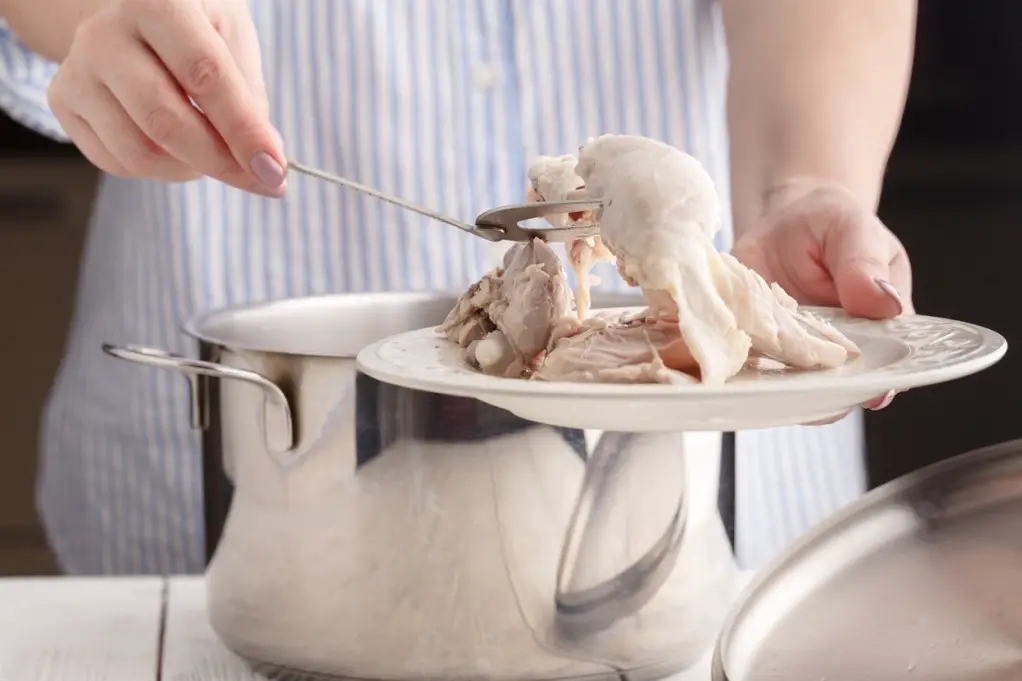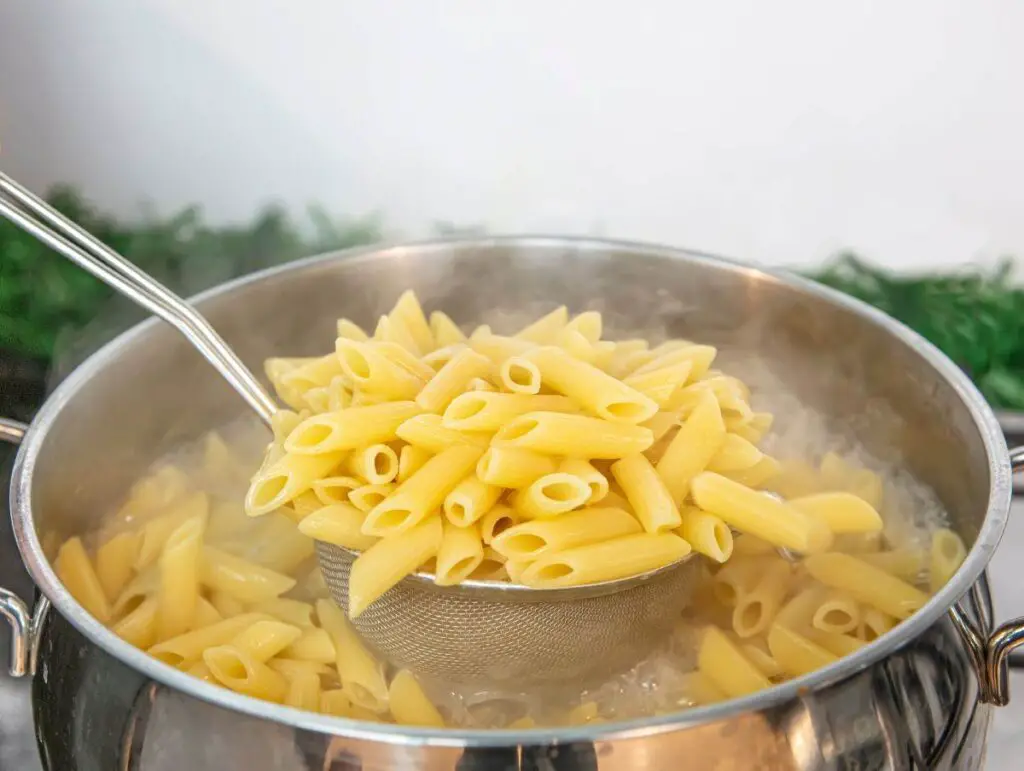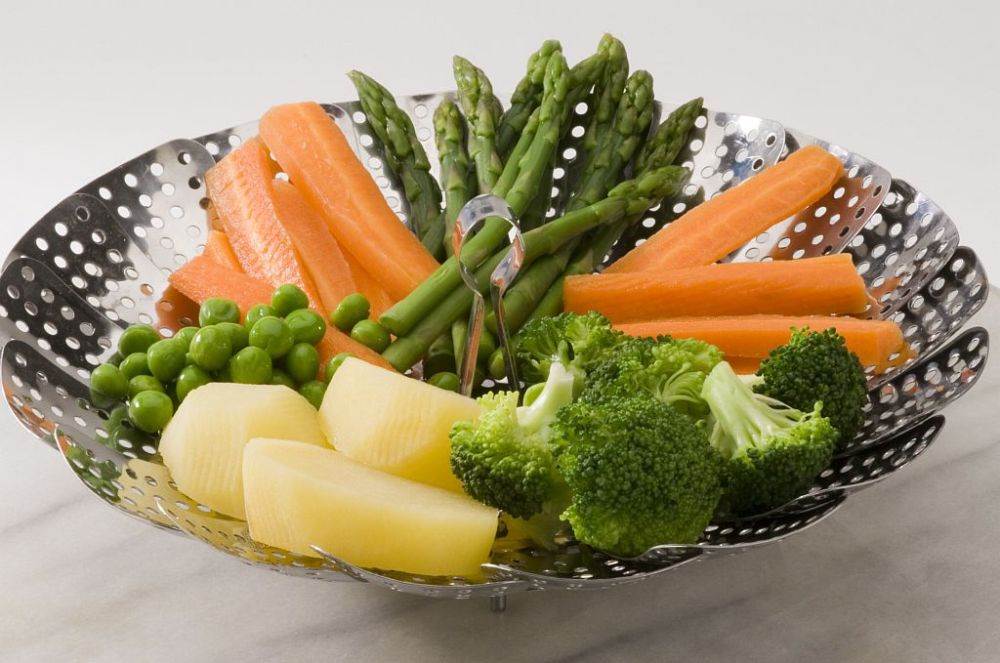
What Does “Slightly Overcooked” Mean?
In the culinary realm, “slightly overcooked” refers to the delicate line where a dish has been cooked just beyond its optimal point. It’s that moment when the food spends a tad too much time on the heat, leading to subtle changes in texture, taste, and appearance.
Imagine a juicy steak that has been left on the grill a few minutes longer than intended, resulting in a slightly drier and firmer bite. Picture perfectly al dente pasta that has softened a touch too much, losing a hint of its desired firmness. Or consider vibrant vegetables that have lingered in boiling water just a bit too long, losing some of their original vibrancy and crispness.
Slight overcooking can vary from dish to dish and may not always be immediately noticeable. It can arise from distractions, multitasking in the kitchen, or simply miscalculating cooking times. However, this culinary “mistake” doesn’t spell disaster; it presents an opportunity for creativity. Skilled chefs and home cooks alike can use their expertise to transform these moments into culinary masterpieces, showcasing their ingenuity and turning slight overcooking into a delectable art form.
In essence, “slightly overcooked” is not a culinary catastrophe; it’s a realm of culinary finesse where chefs can demonstrate their prowess and breathe new life into their dishes, surprising and delighting diners with unexpected flavors and textures. It’s a delicate dance where the line between perfection and artistry intersects, elevating the culinary experience to new heights.

The Fine Line: Cooking to Perfection
Cooking is an intricate dance of heat, time, and precision—a symphony where every second counts. At the heart of this culinary masterpiece lies the fine line between achieving perfection and veering into the territory of overcooking.
In the pursuit of culinary excellence, chefs and home cooks strive to hit that sweet spot where flavors harmonize, textures delight, and aromas captivate. It’s the moment when a steak is grilled to succulent juiciness, pasta reaches a divine al dente state, and vegetables retain their vibrant colors and crunch.
However, this fine line can be elusive, demanding a keen eye and intuition. It requires understanding the nuances of different ingredients and cooking methods. A few seconds too long on the heat can transform a tender cut of meat into a tough disappointment or render delicate vegetables into a mushy mess.
To navigate this culinary tightrope, chefs rely on their senses and expertise. They know when to pull the pan off the stove, remove the roast from the oven, or turn off the boiling water. Timing is everything, and the difference between perfection and mediocrity can hinge on mere seconds.
Embracing the fine line of cooking to perfection is an art form that comes with experience, practice, and a deep appreciation for the ingredients. It’s a dance where intuition meets skill, and creativity intertwines with science. As we tiptoe this fine line, we discover the magic that happens when a dish transcends from good to extraordinary, leaving a lasting impression on the palate and in the heart.

Overcooked Meat: Dry and Tough
In the realm of culinary mishaps, overcooking meat is a common pitfall that can turn a promising dish into a disappointment. When meat is cooked beyond its optimal point, it loses its tender juiciness and transforms into a dry and tough texture.
The unfortunate result of overcooking meat is the loss of moisture. As the proteins contract and squeeze out the natural juices, the meat becomes progressively drier. The savory flavors that we crave in a perfectly cooked steak or roast are compromised, leaving us with a less satisfying dining experience.
Fear not, though, as even in the face of overcooked meat, culinary ingenuity prevails. Skilled chefs and savvy home cooks know how to turn this challenge into an opportunity. Techniques like marinating, braising, or even incorporating sauces can help revitalize overcooked meat, infusing it with moisture and flavor, proving that a little creativity can redeem even the most overcooked of meats.

Overcooked Pasta: Mushy and Tasteless
Nothing can dampen the excitement of a pasta dish more than overcooking the noodles. When pasta is cooked beyond its perfect al dente texture, it takes a sad turn towards becoming mushy and tasteless.
The beauty of al dente lies in the pasta’s slight firmness, providing a delightful chewiness that complements the sauce and enhances the overall dining experience. However, when pasta is overcooked, it loses that desirable bite, turning soft and lackluster.
Mushy pasta not only lacks the satisfying texture but also fails to absorb the flavors of the accompanying sauce, resulting in a dish that falls flat on the taste buds.
Yet, do not despair, for in the world of culinary alchemy, there are ways to revive overcooked pasta. Through creative reinventions and innovative cooking techniques, skilled chefs and home cooks can breathe new life into those limp noodles, transforming them into delectable pasta dishes that surprise and delight the palate once more. So, fear not the slight mishap of overcooking, as with a dash of culinary finesse, pasta perfection can still be achieved.

Overcooked Vegetables: Loss of Nutrients
Vegetables, vibrant and brimming with nutrients, can take a detrimental turn when subjected to overcooking. When vegetables are cooked beyond their optimal point, they suffer from a loss of essential vitamins, minerals, and vibrant colors.
Heat exposure during overcooking causes water-soluble vitamins like vitamin C and B-complex vitamins to leach into the cooking water. This nutrient loss diminishes the nutritional value of the vegetables, robbing us of the health benefits they offer.
Moreover, overcooking vegetables can lead to a loss of their natural crunch and vibrant colors, leaving them limp, dull, and unappetizing.
However, all is not lost, as culinary creativity comes to the rescue. Transforming overcooked vegetables into flavorful soups, stews, or purees can salvage the nutrient content and produce delightful dishes.
As we navigate the culinary terrain, a delicate balance must be struck, appreciating the fine line between perfectly cooked vegetables and a potential loss of vital nutrients. With culinary finesse, we can ensure that our vegetable dishes remain both visually appealing and nutrient-rich, offering a feast for both the eyes and the body.


Invest in a Food Thermometer
In the quest for culinary perfection, a food thermometer is an invaluable tool that every home cook and professional chef should have in their kitchen arsenal. This nifty gadget takes the guesswork out of cooking, ensuring that meats, poultry, and even baked goods reach the ideal internal temperature for safe consumption and optimal taste.
Cooking times provided in recipes can vary depending on factors like oven temperature accuracy and the thickness of the food. By using a food thermometer, you can eliminate the risk of undercooking or overcooking, guaranteeing that your dishes are cooked to perfection.
Whether you’re grilling a juicy steak, roasting a tender chicken, or baking a delicate cake, a food thermometer provides accurate readings, giving you the confidence to create culinary masterpieces.
Investing in a food thermometer is a small yet significant step towards elevating your cooking skills and ensuring food safety. It’s a wise investment that empowers you to deliver consistently delicious and perfectly cooked meals that will impress your family and guests alike.

Use Timers and Alarms
In the hustle and bustle of the kitchen, keeping track of cooking times can be a challenge. That’s where timers and alarms come to the rescue, serving as your faithful kitchen companions.
Set timers on your stove or use a reliable kitchen timer to alert you when your dishes are ready. Whether it’s simmering soups, boiling pasta, or baking cookies, timers ensure that you never miss the perfect cooking point.
For multitasking chefs, phone alarms can be a lifesaver. Set reminders for crucial moments during cooking, such as flipping a steak or checking on a casserole.
Timers and alarms take the stress out of cooking, allowing you to focus on other tasks without the fear of overcooking. Embrace these trusty timekeepers, and you’ll witness how precise cooking timings elevate your culinary creations from ordinary to extraordinary.

Monitor Your Cooking
Cooking is a dance of flavors and textures, and like any art form, it requires attentive observation. Monitoring your cooking is the key to achieving culinary perfection.
Keep a watchful eye on your dishes as they cook, gauging their progress and making any necessary adjustments. Whether it’s checking the color of roasting vegetables, testing the doneness of a steak with a gentle touch, or lifting the lid to catch the aroma of a simmering sauce, active monitoring ensures that you stay in control of your culinary creation.
Remember, cooking times can vary depending on factors like heat intensity and ingredient quality. By closely monitoring your dishes, you can fine-tune the cooking process to suit your preferences and achieve the desired results.
Embrace the role of the attentive chef, and let your senses guide you. As you master the art of monitoring, you’ll discover how it enhances your culinary prowess, elevating your dishes to new heights of deliciousness and satisfaction.

Resting Period for Meat
A crucial but often overlooked step in the cooking process is the resting period for meat. After cooking, it’s tempting to dive right into a sizzling steak or a succulent roast, but exercising patience can make all the difference in the final result.
Resting meat allows its internal juices to redistribute, ensuring that every bite is moist and flavorful. As meat cooks, the juices move towards the center. When taken off the heat, these juices remain in the center, making the outer layers drier.
By allowing the meat to rest for a few minutes before slicing or serving, the juices have time to disperse evenly throughout the meat. The result is a tender, juicy, and more delicious dish.
The resting period also allows the meat to continue cooking slightly, known as carryover cooking. This gentle finish ensures that the meat reaches its ideal level of doneness without the risk of overcooking.
Embrace the art of patience in cooking, and you’ll be rewarded with meat that tantalizes your taste buds and leaves a lasting impression on your palate.


Reviving Overcooked Meat
Even the most skilled cooks may find themselves with overcooked meat on occasion. Don’t fret; culinary ingenuity comes to the rescue! With a few simple tricks, you can revive that dry and tough meat and turn it into a delightful meal.
One method to inject moisture back into overcooked meat is by using a flavorful marinade or sauce. Let the meat soak in the marinade for a while, allowing it to absorb the liquid and regain some of its tenderness.
Alternatively, consider slicing the overcooked meat thinly and incorporating it into a stir-fry or hearty stew. Cooking it with a medley of vegetables and aromatic spices can help mask any dryness and elevate the overall flavor profile.
Another option is to shred the meat and incorporate it into sandwiches or wraps. By pairing it with creamy spreads or tangy dressings, you can create a mouthwatering dish that breathes new life into the overcooked meat.
Through resourcefulness and creativity, you can transform a cooking mishap into a culinary triumph, proving that with a little culinary finesse, overcooked meat can still shine on the dining table.
Transforming Overcooked Pasta
Overcooked pasta doesn’t have to mean a culinary disaster. With a touch of creativity and some culinary magic, you can easily transform mushy noodles into delightful dishes.
One technique to salvage overcooked pasta is sautéing it in a hot pan with a drizzle of olive oil. This method adds a lovely crispness to the pasta, giving it a new texture and depth of flavor.
Another option is to turn the overcooked pasta into a cheesy baked dish. Mix it with a rich and creamy sauce, top it with cheese, and bake it until golden and bubbly. The result is a delectable pasta casserole that will delight your taste buds.
For a lighter twist, toss the overcooked pasta with fresh vegetables and a zesty vinaigrette. Adding some grilled chicken or shrimp can elevate this pasta salad into a satisfying meal.
Lastly, consider turning the overcooked pasta into a flavorful pasta soup. Simmer it in a broth with vegetables and herbs for a comforting and hearty dish.
With a little culinary imagination, you can transform overcooked pasta into an array of delicious dishes, proving that even cooking mishaps can lead to culinary triumphs. Embrace your creativity and let your taste buds guide the way!
Reinventing Overcooked Vegetables
Overcooked vegetables need not be a disappointment; they can become the canvas for culinary reinvention. With a dash of creativity and some inspired techniques, you can breathe new life into those limp vegetables.
One approach is to turn overcooked vegetables into a flavorful vegetable puree or soup. Blend them with aromatic herbs and broth to create a velvety and comforting dish that highlights their natural flavors.
Alternatively, consider transforming the overcooked vegetables into a vibrant stir-fry. Sauté them with an array of spices and sauces to infuse bold flavors and textures.
Another option is to incorporate the overcooked vegetables into a hearty casserole or gratin. Layer them with cheese, breadcrumbs, and a creamy sauce, then bake to golden perfection.
For a refreshing twist, turn the overcooked vegetables into a colorful salad. Mix them with a zesty dressing and complementary ingredients like nuts, fruits, or cheeses.
By thinking outside the box, you can elevate overcooked vegetables into exciting new dishes that surprise and delight. Embrace the art of culinary reinvention, and your once-limp vegetables will shine anew on the dining table.




In the culinary world, the pursuit of perfection is a noble endeavor. Yet, there is a hidden beauty in imperfections, especially when it comes to slight overcooking. Embracing these culinary mishaps can lead to delightful surprises and unexpected culinary artistry.
Slight overcooking adds character and depth to dishes, like an artist’s brushstroke on a canvas. It brings forth new textures and flavors that can awaken the taste buds. The slightly crispy edges of a pan-seared steak or the caramelized bits on roasted vegetables are a testament to the magic of slight overcooking.
Just as life’s imperfections make it more interesting and meaningful, so do the culinary imperfections that arise from slight overcooking. It allows us to explore the full spectrum of flavors and experiment with creative ways to salvage and elevate our dishes.
In the kitchen, as in life, we learn to adapt and find beauty in unexpected places. Embracing slight overcooking is a lesson in culinary humility, reminding us that perfection is not always the ultimate goal. Instead, it’s the journey of experimentation and creativity that brings joy to the culinary experience.
So, the next time your dish is slightly overcooked, don’t fret. Embrace the imperfection and let your culinary artistry shine. After all, it’s in these subtle nuances that the true beauty of cooking reveals itself.

In the world of cooking, where flavors, textures, and aromas intertwine, slight imperfections can lead to unexpected delights. Throughout this culinary journey, we’ve explored the art of “slightly overcooked” and discovered its intriguing facets.
From overcooked meat and mushy pasta to limp vegetables, we’ve learned that there’s magic in these imperfections. They present us with opportunities for culinary creativity and reinvention, transforming seemingly flawed dishes into culinary triumphs.
Investing in a food thermometer and using timers and alarms are essential tools to help us navigate the fine line between perfection and overcooking. Monitoring our cooking with attentive eyes and embracing the resting period for meat ensures that our dishes reach their full potential.
Moreover, we’ve seen how to breathe new life into overcooked creations—reviving meat with flavorful marinades, sautéing overcooked pasta to perfection, and transforming limp vegetables into hearty dishes.
And finally, we’ve learned to find beauty in imperfections, celebrating slight overcooking as a reminder that the joy of cooking lies not solely in perfection but in the journey of exploration and creativity.
So, let us embark on future culinary adventures with open hearts and minds, embracing the art of “slightly overcooked” and discovering the unexpected beauty that lies within. After all, in the world of cooking, it’s the imperfect moments that often make the most memorable and cherished dishes.
